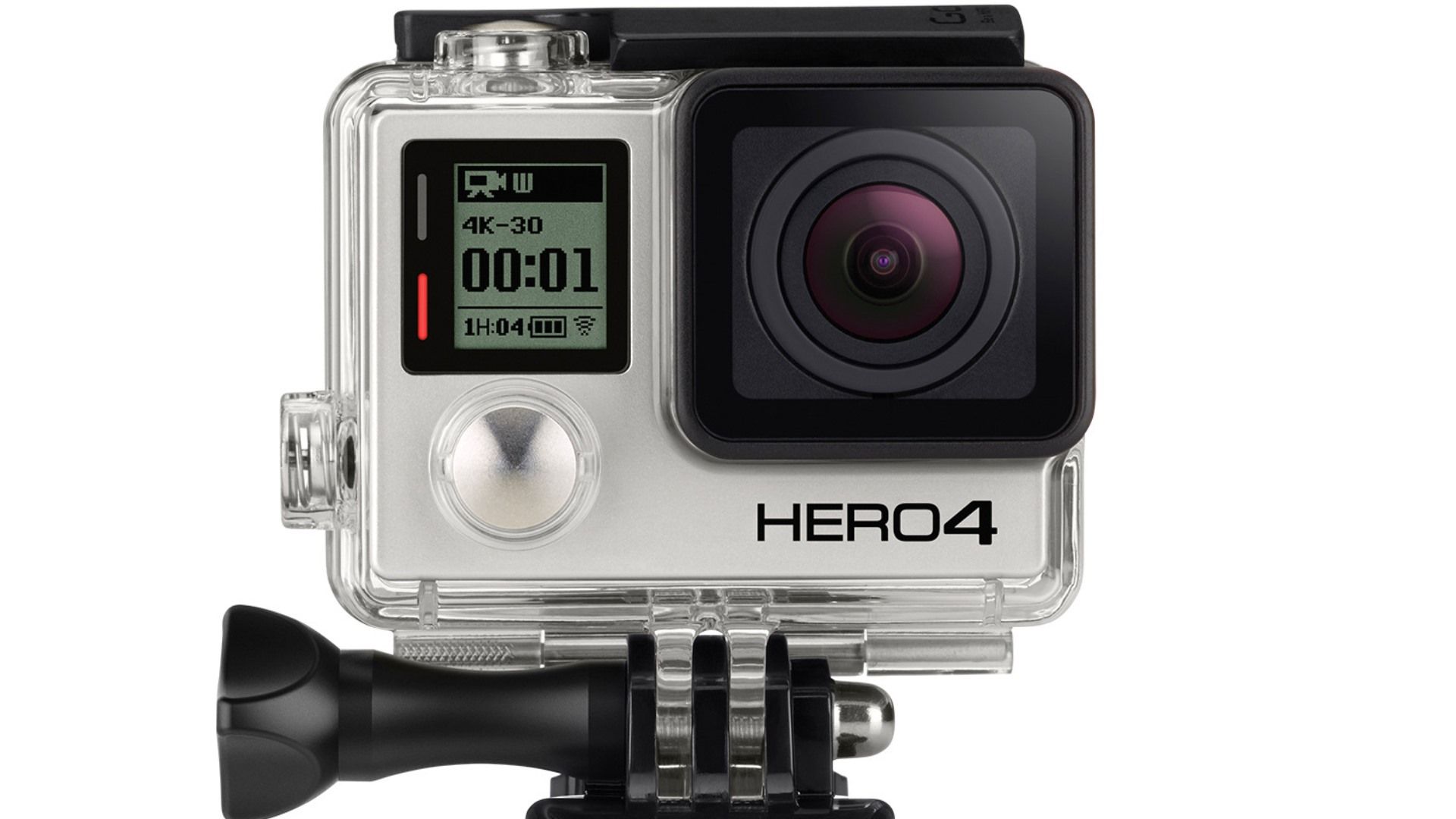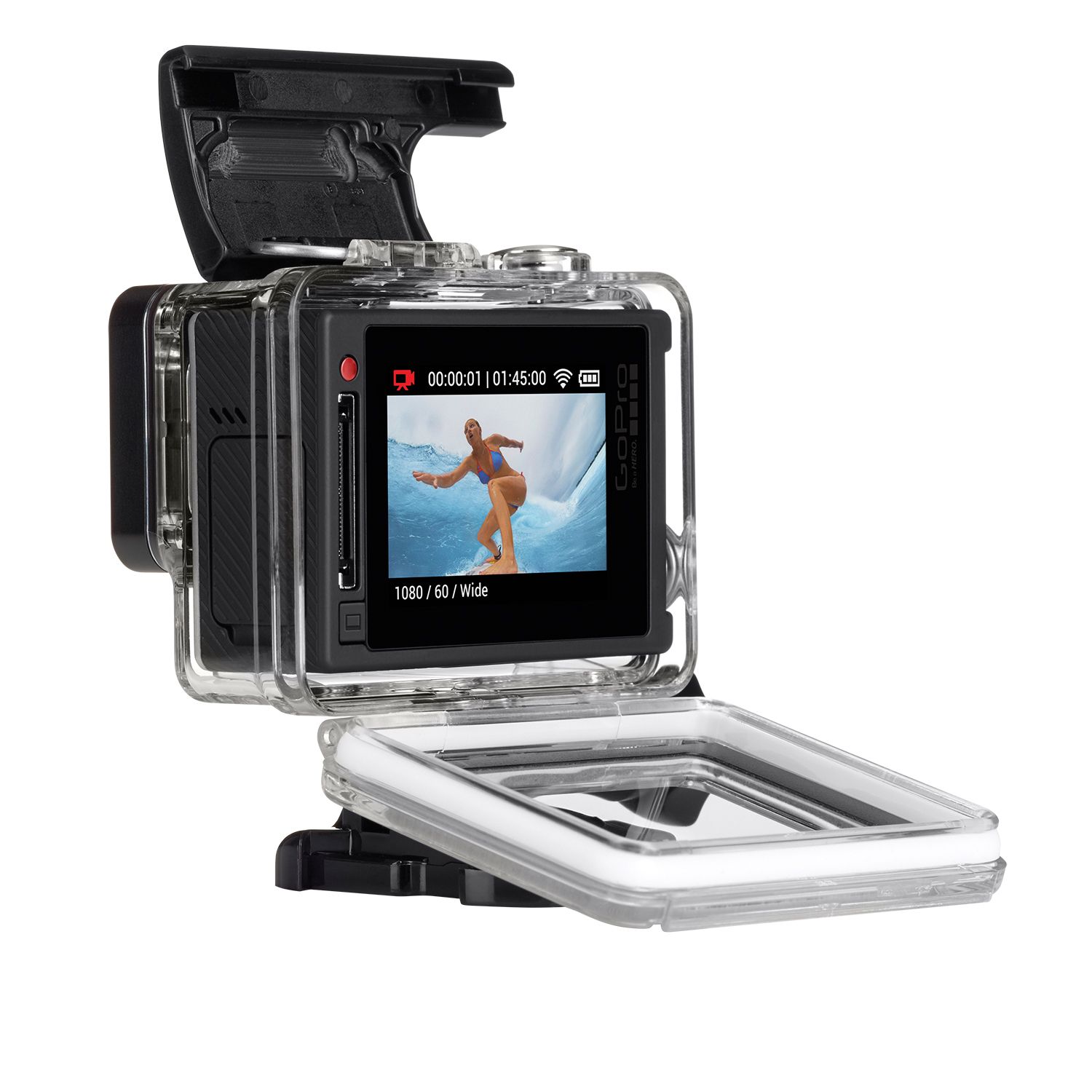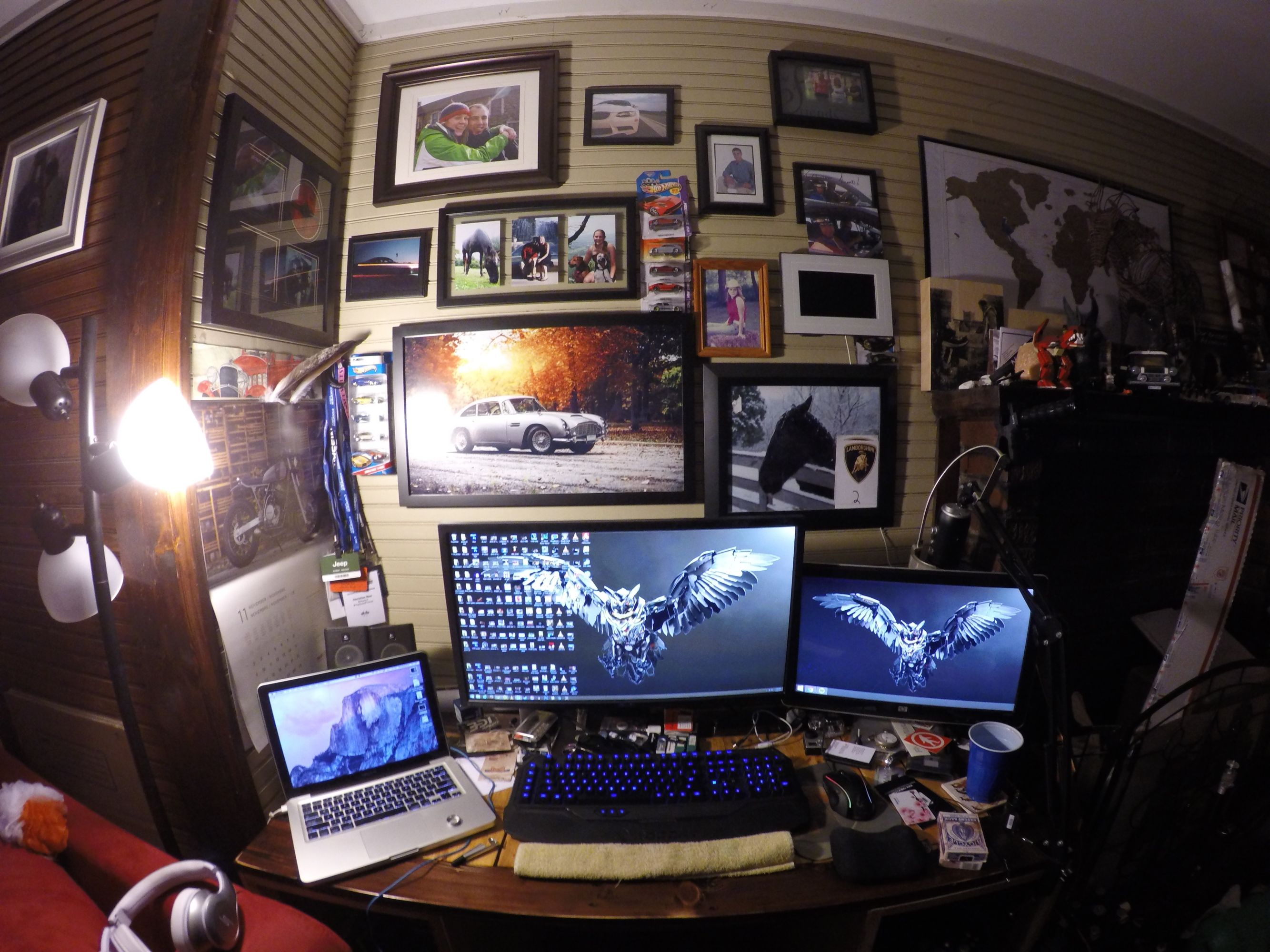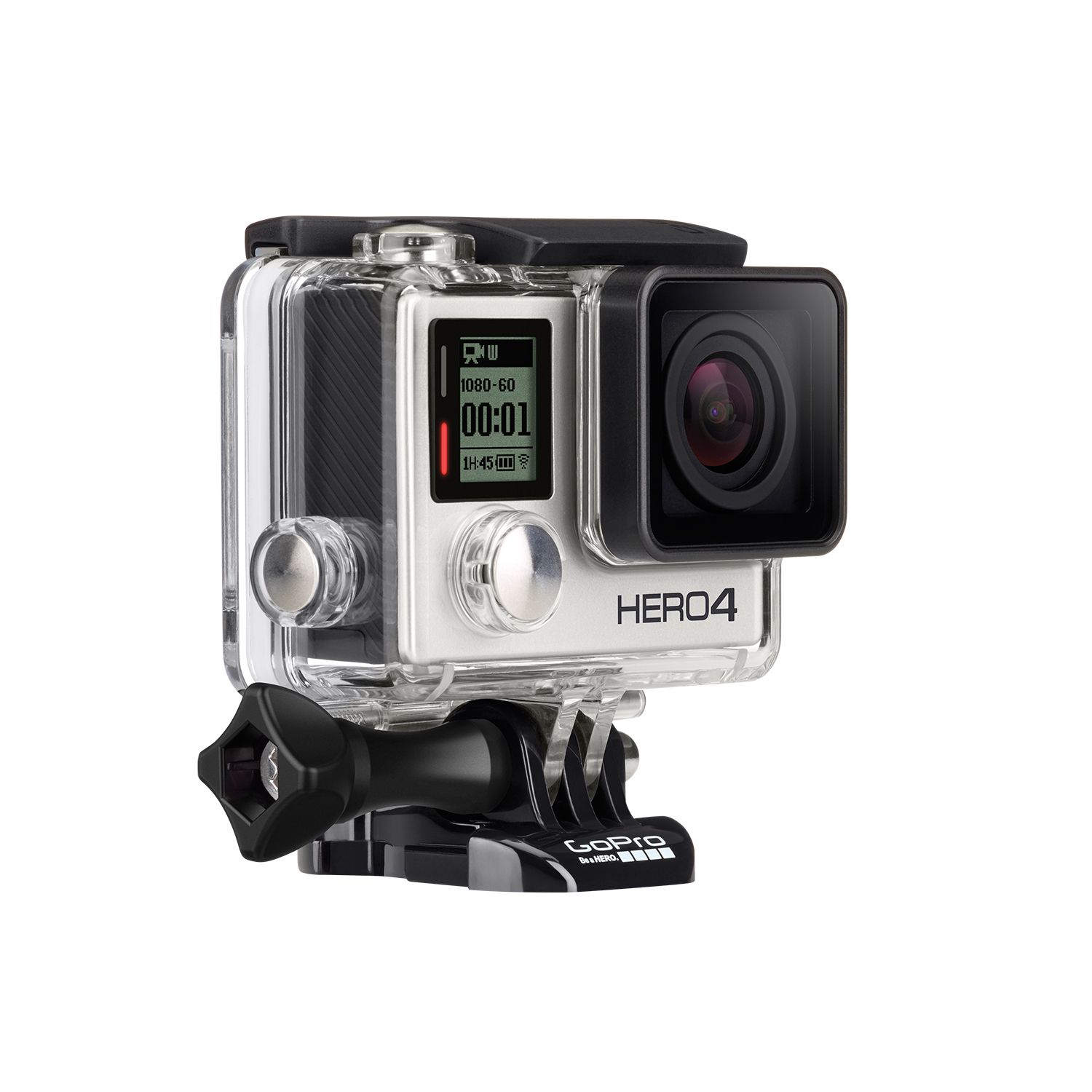What started as a bulky and barely waterproof 35mm camera has been morphed into a billion-dollar camera company and one of the most well-known brand names in the entire world. GoPro has humble beginnings, but now the cameras are technological marvels that have helped in creating some of the greatest video->ke278 footage the world has seen in the last fifty years. Every year or so GoPro manages to improve on its iconic camera and make it better in almost every way. That trend continued this year with the new GoPro Hero 4.
Available in two models, Silver and Black, the new Hero 4 is lighter, faster and more powerful than any model to come before it. With this new camera also came a $100 price hike over the outgoing Hero 3+.
Is that $100 worth the amount of improvements made, or should you run out and grab the cheaper Hero 3+ while you still can? I happen to have both models and I decided to give them a solid run down to find out which is the better buy. Read on to find out if the newest GoPro really is the best camera the company has ever created.
Read on to learn more about the GoPro Hero 4 camera.
Every video included below was created with our GoPro Hero 4 Silver camera.
Visual Changes
From first glance, there is very little that has changed between the last camera and this one, but once you get them out of their housings and take a closer look, the new Hero 4 has lots of major changes.
On the front, the LCD screen now has black trim, and it features two slim LED lights on the left of the LCD. The old Hero 3 cameras have two large circular LEDs mounted near the bottom-center of the device. While the silver paint that covers the front of both cameras looks identical in color, the Hero 4’s paint feels a bit more rubbery, like it’s a soft-touch plastic coating.
Around the edges, the Hero 4 has moved the left-mounted microphone to the right side, and the battery door is now mounted on the bottom. The texture of the sides is also new and different. The old Hero 3 has a crosshatched pattern, while the Hero 4 makes use of a single set of parallel lines.
On the left side of the camera is a single small button that used to be used to turn the camera’s inbuilt wi-fi on and off, but for the Hero 4 it has been replaced with a general “settings” button that jumps you straight into the camera’s menu system.
The biggest change between my Hero 3 and Hero 4 Silver is found on the back. The reason the battery door has been moved to the bottom of the camera is to make room for the new touchscreen LCD that comes built into every single Hero 4 Silver model.
Let’s talk about that LCD
The addition of a touchscreen LCD is easily the biggest change to the Hero 4 Silver, both in terms of visual differences and usability. The screen supports live view so you can actually see what you are taking a picture of, and it is now much easier to line up your shots.
Previously there was an LCD back panel that could be purchased separately, and this new screen mirrors that functionality, it just does without the extra heft and cost. The screen itself is very bright and the resolution is better than expected. I would easily say it is a higher quality LCD than the unit found on my Canon T2i DSLR.
The screen does add a slight bit of weight, and continual usage will impact battery life, but overall I found it to be a great addition to the camera.
Since it’s a touch screen, it is beyond easy to use. There is a small button to the left side of the screen that turns it off an locks it. A quick press and the screen is on and ready. There is a small lock function that required you to move a small red ball into a circle on-screen and hold it for one-second. This is to prevent you from adjusting the settings by accident if you are handling the camera.
Most importantly for a GoPro, the screen feels extremely sturdy. Whatever it is coated in feels more like a heavy duty plastic than a fragile sheet of glass.
Image Quality
Hero 4 on top, Hero 3+ on bottom
So the new GoPro Hero 4 Silver has a fancy new LCD on the back, but is the quality any better? In many ways yes, and in a lot of other ways, no. The actual sensor that in is the Hero 4 Silver is nearly identical to the one in the Hero 3+ Black. From a purely technical standpoint, that means the photos between the two cameras will look identical. In actuality, a big set of software and lens adjustments has resulted in mild differences in video quality, but massive jumps in the look of stills.
GoPro has a movie mode title ProTune that enhances the contrast, brightness, white balance and other features of videos to make them look more vibrant and alive. This not only creates great-looking videos, but it cuts down on editing time. For the Hero 4, GoPro has moved that same ProTune mode to the photo side. That means manual control of things like ISO, and better white balance and contrast levels. The result is pictures that look noticeably better between the two cameras.
The new Hero 4 also has better night-photo functionality with the new spot metering, shutter time and ISO controls. That means that impressive-looking, long-exposure photos and time lapses are now possible. This one software change has taken the GoPro from being a decent camera that you have with you, to a legitimate camera for real world and artistic use.
You can look at the photos here to see the difference the new settings have made between photos. Both photos were hand-held shots, but the Hero 4’s better ISO settings meant a shorter shutter time so far less blur. You can also see the effect of the white balance between the two cameras.
Audio Quality
GoPro may not have altered the camera sensor between the 3+ Black and the 4 Silver, but they did completely revamp the audio circuitry to provide double the dynamic range. The result is audio that is much crisper and cleaner with better real-world representation of volume and notes. This video is a comparison between the two cameras. The cameras were both recording at the same time, and in the same location. Notice the differences between them.
In this completely unscientific test that involves nothing but slow guitar music, it seems like the Hero 3+ sounds a bit more blown out. Almost as if the guitar audio is maxing the internal microphone's recording volume. The Hero 4 sounds a bit crisper, but it also doesn't seem to pick on the higher notes as well.
Battery Life
My biggest complaint about every GoPro I have ever used is battery life. Part of the sacrifice of having a camera so small is having a battery that is also very small. From the Hero 3 to the Hero 3+ there was a substantial increase in battery life thanks to an improved battery. That said you only had about 90 minutes of filming time before the camera would die. The new Hero 4 has a battery that is small in dimensional size, but equal in capacity. The net result is a battery that is equal to its predecessor, but not a noticeable improvement. In testing, I can manage about 90 to 100 minutes of continuous filming before the camera dies. If you use the LCD constantly as a viewfinder during video, the battery will obviously give out much quicker.
GoPro Hero 4 Black
My model is the Silver edition, but if you need more filming power and image quality, the Black edition is what you need. It swaps the LCD display on the Silver for a more powerful imaging sensor. That means even better low-light performance and much higher-quality video modes. This little camera has higher frame rates available at almost every resolution, and the Hero 4 Black can do full 4K video at 30 fps. That alone makes the Hero 4 Black one of the cheapest and smallest 4K cameras in the world. For the causal user, the LCD equipped Silver Hero 4 is probably the best choice. If you are a buyer looking at grabbing a 4K resolution camera for a relatively bargain level price, the Hero 4 Black is one of the best options on the market.
Pricing
The GoPro Hero 4 is priced at $399 for the Silver edition and $499 for the Black edition. On paper that makes it $100 more than the both the Silver and Black models of the Hero 3+. In truth, the pricing is actually far more fair than it first appears. The Hero 4 Silver has the same sensor as the old 3+ Black, and it comes with the LCD, so essentially GoPro is charging same price they always have, they just gave you an LCD as a bonus. The 4K capable Hero 4 Black is just one step above that, and carries an acceptable price for the performance.
That said, it can seem like $400 is a lot of money to ask for a camera, but considering the ruggedness of the enclosures, the quality of the camera sensor, and the compact size, GoPro is offering a lot for the money.
Conclusion
The Hero 4 is easily the best GoPro that has ever been released. The “low-tier” model Silver edition is just as powerful as the old 3+ Black, but comes with a new LCD touch display built in, and it still manages similar battery life, and comes built in a case that is the exact same size as the old model. If you spend the cash for the Hero 4 Black, you get one of the most powerful compact cameras in the entire world that has the imaging quality to keep up with some of the best professional level cameras on sale today.
The simple truth is that GoPro has built an empire on more than intelligent marketing. By having the best combination of usability, performance, weight and durability, GoPro has continually pushed the boundaries of what an “action-cam” can actually be. Now you can have a camera that is capable of recording 4K video 100-feet under water, and the whole thing weighs less than a new iPhone. The GoPro Hero 4 is more than the best GoPro, its one of the best cameras on sale today, full stop.






